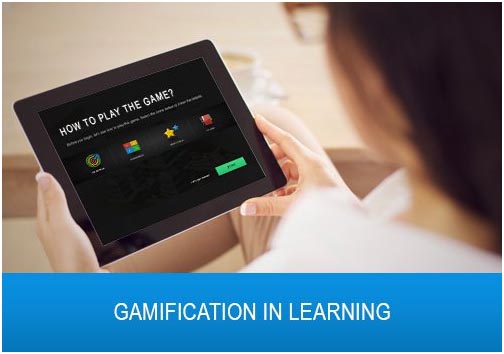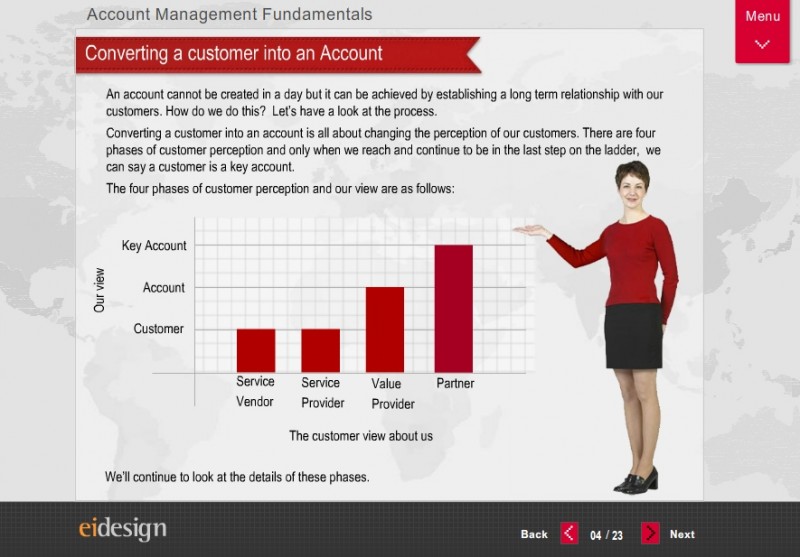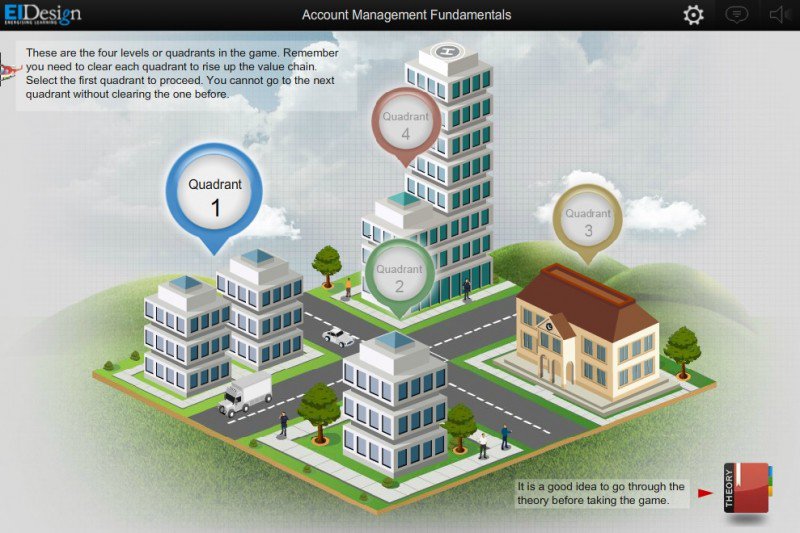
Wikipedia defines Gamification as “the use of game thinking and game mechanics in non-game contexts to engage users in solving problems”. While Gamification has been applied in several domains, our focus has been on its application in learning. Research certainly confirms the advantages of learning through Gamification. Let me share a case study that compares the gains in learning achieved through serious game concept vs a traditional eLearning approach.
Gamification In Learning
Wikipedia defines Gamification as “the use of game thinking and game mechanics in non-game contexts to engage users in solving problems”. As per Wikipedia, “Gamification techniques strive to leverage people’s natural desires for socializing, learning, mastery, competition, achievement, status, self-expression, altruism or closure. Gamification strategies include use of rewards for players who accomplish desired tasks or competition to engage players. Types of rewards include points, achievement badges or levels, the filling of a progress bar or providing the user with virtual currency. Making the rewards for accomplishing tasks visible to other players or providing leader boards are further ways of encouraging players to compete”.
While Gamification has been applied in several domains, our focus has been on its application in learning. The games that we design are therefore geared to meet definite learning outcomes and our Gamification strategies broadly map to:
- Tasks or concepts that are overlaid on the learning content but are not related to the content
- Contextual tasks or concepts that are overlaid on the learning content
- Partial gamification (notably in inline checks and end of course assessments)
Research certainly confirms the advantages of learning through Gamification. Let me share a case study that compares the gains in learning achieved through serious game concept vs a traditional eLearning approach.
Background
We had to design a quick online training for Project Managers who were being groomed to handle Account Management practices. The course on Account Management Fundamentals outlined the basics of account management and more specifically, what they must do to move their organization up the value chain.
The learners needed to understand two aspects:
- Their organization’s view that was to scale the newly acquired/existing customer to an Account and then to a Key Account
- The need to work on changing the customer view and scale their organization from a service vendor to a strategic partner (This journey was mapped to four levels/quadrants and it represented the challenges that the learners must face to accomplish the required mandate.)
First approach (traditional eLearning based)
The first solution was in a traditional eLearning format. To get the online training quickly off the ground, we used the Articulate Presenter based approach to present the basics of Account Management. This is what the first version of the course looked like.

Gains and challenges
The initial mandate was to quickly train the Project Managers on the essentials of Account Management and this was met.
However, the feedback from the learners was that they need specific cues on how to accomplish each step to move up the value chain.
Second approach (serious game based)
We reworked with the revised learning mandate and now chose a Gamification approach.
- The key objective for the learner was to understand how to meet the organizational mandate to graduate from Level 1 association with customers (as a service vendor) and move up progressively to Level 2 (as a service provider), Level 3 (as a value provider) and finally to Level 4 (as a strategic partner).
- These four levels were mapped to four challenges/quadrants as shown in the first screenshot.
- The entire learning was driven through interactive scenario based questions (based on real life situations) that the learners had to attempt at each level/quadrant in the game. Based on their responses that enable them to clear a given quadrant, they would be provided access to move to the next one.
- The approach was designed for scalability wherein the questions could be easily updated. We also provided a randomized pooling of questions to ensure that on every return, the learner encountered some new challenges.
- The second screenshot presents the rules of the game.Learners had the option to refer to the learning content at anytime in the game as a lifeline.
- On successful completion of all four quadrants, the learners had gone through typical situations they are likely to face in real life, practice them in a safe environment and realize their goal of becoming a true Account Manager.

Summary
This approach met the mandate and the serious game concept enabled the learners to handle the real life challenges in an engaging and immersive format. The ongoing updation of the question bank and their randomization kept them intrigued and also enabled them to continuously hone their skills.
What’s next
We are currently working on the next update to the same course with Avatars (featuring two profiles-entry level and seasoned professionals). At the start of the game, learners need to select their profile type so that the scenarios and questions can be personalized to their profile. The lifeline feature as well as access to an expert to provide important cues has been factored for the entry level profile. On the other hand, the second avatar (featuring a seasoned Project Manager) would deal with more tricky situations and will not have access to the lifeline or expert’s guidance.
I hope this case study was useful. You can contact me for further queries/specific support.
Read More:



